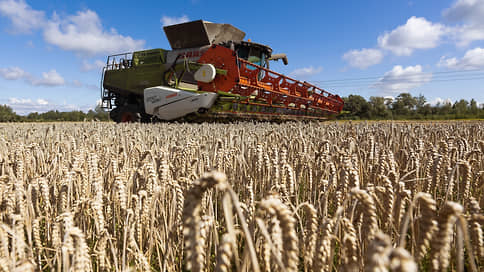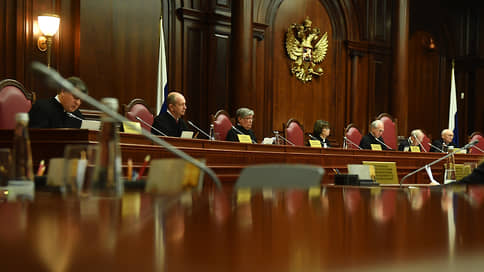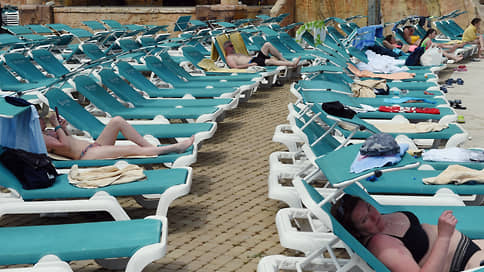The Ministry of Agriculture warned of an increase in wheat prices

As it became known to Kommersant, the Ministry of Agriculture notified President Vladimir Putin of high risks of increasing prices for food wheat of fluid quality due to a decrease in its production in Russia. In the cost of bread, the share of flour is 18–25%, over the past month, the prices of their products for retail chains have already been raised by two large manufacturers – the Kolomensky and Karavay BKH.
Due to a decrease in wheat production in Russia, there was a high risk of rising prices for food wheat of flour-quality quality. This is stated in a letter from the Minister of Agriculture of the Russian Federation Oksana Lut in the name of Vladimir Putin, sent in February (Kommersant has a copy). The cost of grain may be higher than the maximum levels of maximum prices set at 15.6 thousand rubles. per ton of wheat of the third class and 15.1 thousand rubles – the fourth class, follows from the letter. Upon reaching such indicators, the state conducts commodity interventions to stabilize prices.
The Ministry of Agriculture “Kommersant” explained that gross collection of grain allows with a large margin to provide the needs of processors. If, due to weather conditions, grain production is lower than the predicted, the Ministry quickly initiates the introduction of additional non -tariff measures.
Oksana Lut turned to Vladimir Putin in pursuance of his instruction of February 13, 2023. It was dictated by the initiative of the Communist Party of the Communist Party of the Communist Party in the State Duma of Gennady Zyuganov, who proposed increasing the volume of purchases to the intervention fund to 15 million tons. In 2023–2024, the volume of procurement amounted to 944.4 thousand tons.
According to the Ministry of Agriculture, given in the letter of Oksana Lut, at the beginning of February 2025, the cost of a third class wheat in Russia amounted to 14.3 thousand rubles. per ton, increasing by 0.6% per month and 11.3% year by the year. For the fourth class, the increase amounted to 1.9% and 20%, respectively, up to 13.8 thousand rubles. per ton.
The Director of the “Council of Council” Andrei Sizov says that the internal prices for wheat of the third grade in Russia are now 16.1 thousand rubles. per ton, fourth – 15.5 thousand rubles.
A year by the year, values increased by 24% and 48%, respectively. This, according to the expert, is caused mainly by reduction in the crop.
According to Rosstat, the gross harvest of wheat in 2024 amounted to 82.6 million tons, having lost 11% a year by the year. The prognosis of the “Council of Ministers” for 2025 is a reduction by another 4.7%, to 78.7 million tons. The negative trend is dictated by a decrease in sown area, grain yields, profitability of farmers and weather fluctuations, explains Mr. Sizov. Partly on domestic prices, according to Andrei Sizov, is affected by the increase in the cost of wheat in world markets.
The head of the Lazarevskoye agricultural holding Christina Romanovskaya recalls that until last year the crop, on the contrary, increased. This forced enterprises to reduce prices with a cost of 50–70%, some players left the market. “Now the growth in the cost of the cost can be naturally,” says Mrs. Romanovskaya. She believes that the increase in prices for wheat of the third grade of flouric quality will continue: now it is not enough for processors.
Prices for flour, according to Andrei Sizov, follow the wheat: the share of grain in the cost of production reaches 75%.
According to the “Council of Ministers”, the wholesale cost of the high -grade bakery flour in Russia at the end of February of the current year amounted to 23.5 thousand rubles. per ton, increasing by 9.7% a year by the year.
Andrei Sizov draws attention to the fact that the flourity business remains highly competitive and low -hearted. The head of the Institute for the Development of Entrepreneurship and Economics, Arthur Gafarov evaluates the margin of business of Mukomols at 3-5%. To reduce the cost of products, processors, according to him, can use forage grain.
The increase in the cost of flour is one of the factors in increasing bread prices. Two large manufacturers of bread – BKH Kolomensky and Karavay – this year have already notified retailers of raising selling prices for their products in February (I have copies of letters). In the case of “karavaya”, the indexation amounted to 10% and is dictated in particular, a change in flour prices. “Kolomensky” in its appeal indicates that the prices of certain types of raw materials for the manufacturer increased by 3-15%, maintaining the prospect of further growth. Prices also affect the increase in the tax burden, expenses for the wage fund, logistics, follows from the text. Kommersant did not respond promptly in the companies themselves.
President of the Russian Cakes Union Dmitry Semenov indicates that the cost of production of bakery products for the period from January 2024 to January 2025 increased by 27%. The share of flour in the price of production is 18–25%. Wheat flour for bakers has risen in price by an average of 25% per year, rye – by 35%. Arthur Gafarov adds that the increase in grain prices by 12% involves an increase in the cost of bread by 3-4%.
To take measures to regulate the grain market by the government at the end of last year, it was decided to sell up to 3 million tons of grain from the intervention fund reserves, it follows from the letter of Ms. Lut. The Ministry of Agriculture of the intervention is called an effective tool for ensuring price stability in the grain market and its processing products. But Andrei Sizov notes that real sales from the intervention fund remain relatively small. “SOECON” predicts that this season they will amount to about 0.5 million tons. In the current conditions, the proposal of intervention grain is not in demand by processors. The expert draws attention to the fact that the internal prices for wheat in Russia remain the lowest among exporting countries. Their growth, according to Mr. Sizov, restraint primarily export duties and quotas, while interventions play a small role.








